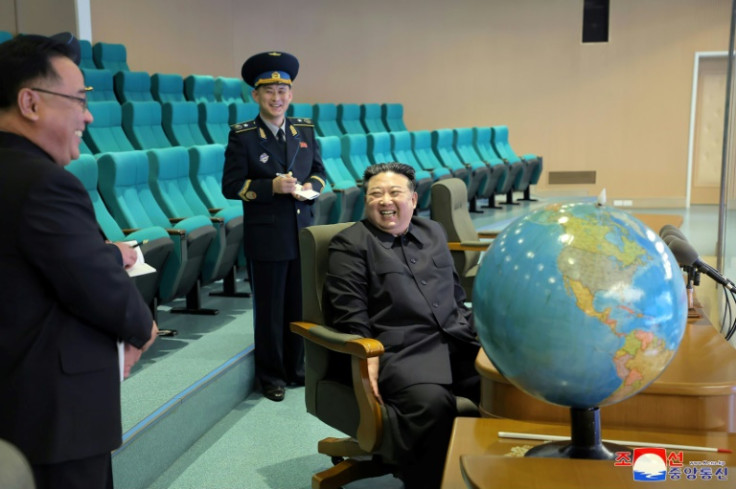Kim Jong Un Reviews Satellite Photos Of US Bases In Hawaii, S. Korea: State Media

North Korean state media said Saturday leader Kim Jong Un reviewed images taken by his country's new spy satellite of a US naval base at Pearl Harbor in Hawaii and "major target" sites across South Korea.
Pyongyang successfully put a military spy satellite into orbit this week, but Seoul said it was too early to determine if the satellite was functioning as the North claims.
Experts have said putting a working reconnaissance satellite into orbit would improve North Korea's intelligence-gathering capabilities, particularly over South Korea, and provide crucial data in any military conflict.
Pyongyang previously claimed, within hours of the Tuesday launch, that Kim was shown photos of US military bases in Guam taken by the satellite, named "Malligyong-1".
On Saturday, the North claimed Kim inspected images taken as the satellite passed over Hawaii at around 5:00 am (2000 GMT Friday), including those of "a naval base in the Pearl Harbor, the Hickam air-force base in Honolulu", according to the North's official Korean Central News Agency.
Kim also reviewed the satellite's images of the South Korean port city of Busan, which Pyongyang said were taken at around 10:00 am on Saturday.
The photos included ones of the US nuclear-powered aircraft carrier USS Carl Vinson, Pyongyang claimed.
The carrier had arrived at the Busan Naval Base on Tuesday, according to Seoul's military.
Kim also reviewed "major target areas in the enemy region" -- referring to the South -- including Jinhae, Busan, Ulsan, Pohang, Daegu and Gangneung, KCNA added.
In an earlier report on Saturday, KCNA said Kim had the day before reviewed the satellite's images of "major target regions" in the South, including its capital and cities hosting US military bases.
The Friday images also included some areas of North Korea, it added.
Among the South Korean cities mentioned, Pyeongtaek -- around 60 kilometres (37 miles) from Seoul -- hosts Camp Humphreys, the largest overseas US military installation in the world.
Pyeongtaek is also home to the Osan Air Base, which houses Seoul's Air Force Operations Command as well as a US Air Force base.
South Korean Defence Minister Shin Won-sik told a local radio station on Thursday that spy satellites cannot produce photographs on the first day of the launch, questioning the credibility of Pyongyang's earlier claims, according to Seoul's Yonhap news agency.
"Even if the satellite enters the orbit (successfully), it takes a considerable amount of time to perform a normal reconnaissance mission," he told the radio station, according to Yonhap.
Pyongyang is barred by successive rounds of UN resolutions from tests using ballistic technology, and analysts say there is significant technological overlap between space launch capabilities and the development of ballistic missiles.
The North's satellite launch has since prompted the two Koreas to suspend -- the South only partially -- a five-year-old military accord established to de-escalate tensions on the peninsula.
Separately, the top diplomats of South Korea, Japan and the United States on Friday "strongly condemned the launch for its destabilizing effect on the region" after a joint phone call, the US State Department said in a statement.
Seoul's spy agency has said that Pyongyang, after two failed attempts to put a satellite in orbit earlier this year, received help from Moscow for this week's successful launch.
"If Russia had provided North Korea with a reconnaissance satellite camera this time, I think it would be possible to identify objects with a radius of at least 2 metres on the ground," Ahn Chan-il, a defector-turned-researcher who runs the World Institute for North Korea Studies, told AFP.
Now that Pyongyang has a spy satellite, the North's next likely step will be to further develop its "strategic nuclear weapons" using space launch capabilities, he added.
© Copyright AFP 2024. All rights reserved.




















